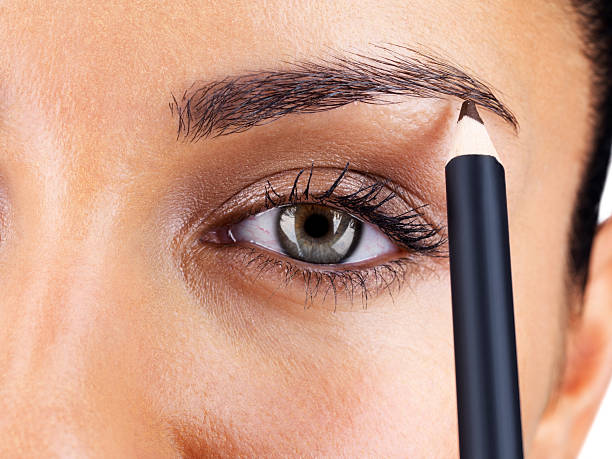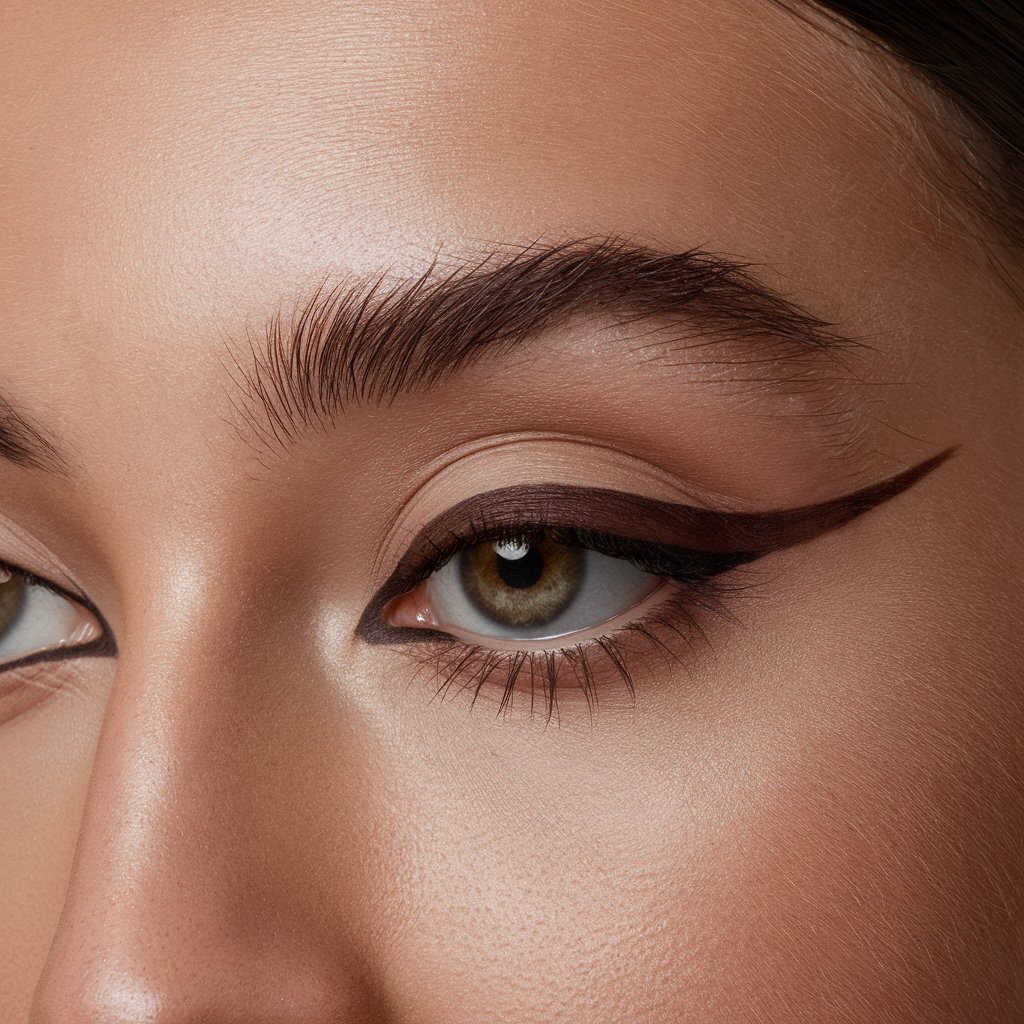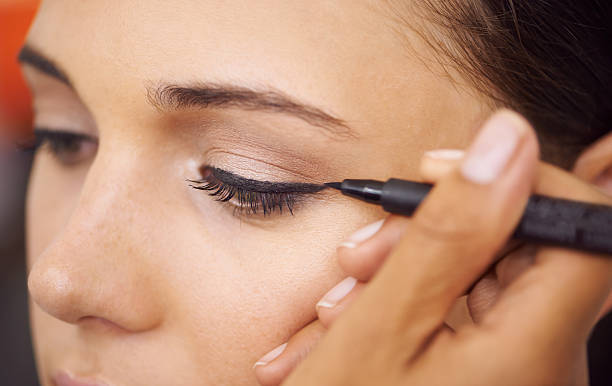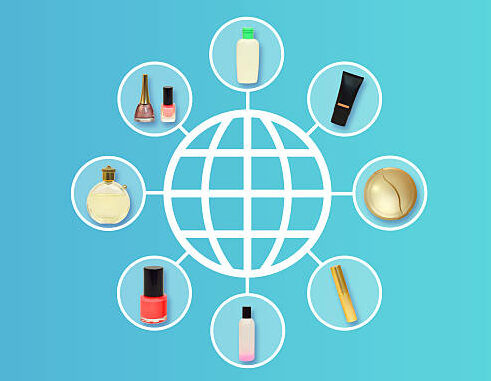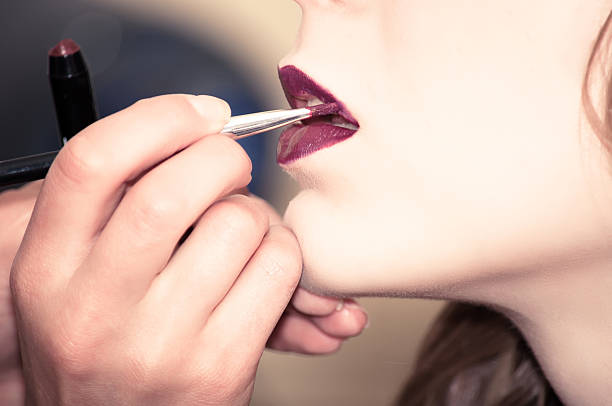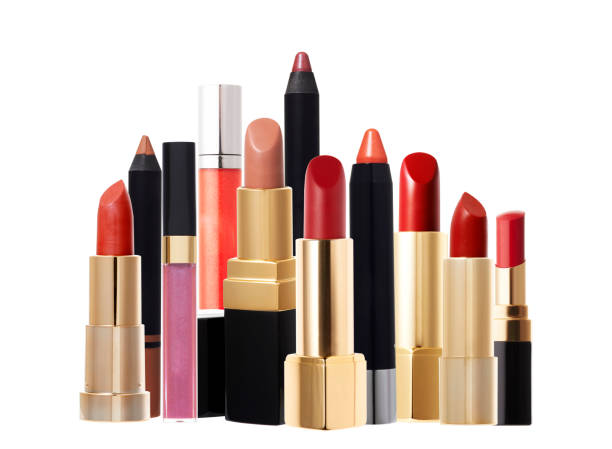تساءلت يوما, كيف يتم تصنيع المكياج? إنتاج المكياج هو مزيج رائع من العلوم, إِبداع, والدقة. بدءًا من صياغة الظل المثالي لأحمر الشفاه وحتى ضمان الملمس المناسب لكريم الأساس, تتضمن العملية تخطيطًا دقيقًا, مكونات عالية الجودة, وإجراءات السلامة الصارمة. دعونا نتعمق في العالم المعقد لصناعة الماكياج ونستكشف التاريخ, التكاليف, والخطوات المتبعة لجلب مستحضرات التجميل المفضلة لديك إلى الحياة.
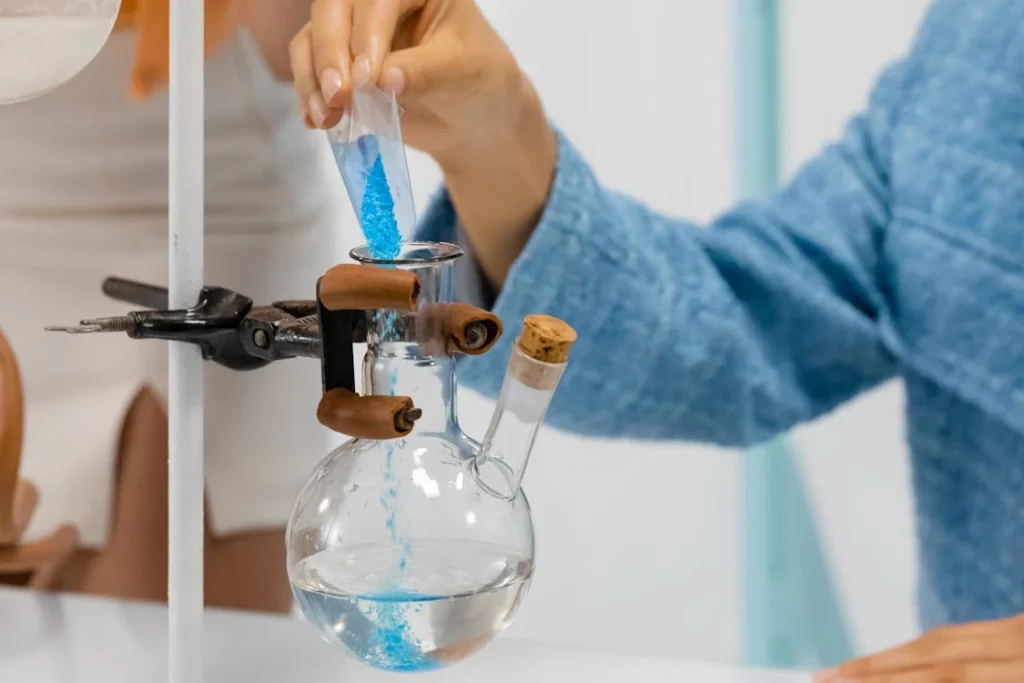
تاريخ صناعة المكياج
يعود تاريخ صناعة المكياج إلى الحضارات القديمة. المصريين, معروفين بكحل العيون وظلال العيون المتقنة, وتستخدم المعادن الطبيعية مثل الملكيت والكحل. في القرن الثامن عشر, اكتسبت مستحضرات التجميل شعبية في أوروبا, مع مساحيق الوجه القائمة على الرصاص والأحمر المصنوع من صبغة القرمزي. بدأ عصر المكياج الحديث في أوائل القرن العشرين مع ظهور الإنتاج الضخم, السماح لعلامات تجارية مثل ماكس فاكتور وريفلون بتقديم منتجات مبتكرة لجمهور أوسع. مهدت هذه التطورات الطريق للتكنولوجيا الفائقة اليوم, صناعة مستحضرات التجميل الخاضعة لرقابة السلامة.
كم تبلغ تكلفة تصنيع المكياج؟?
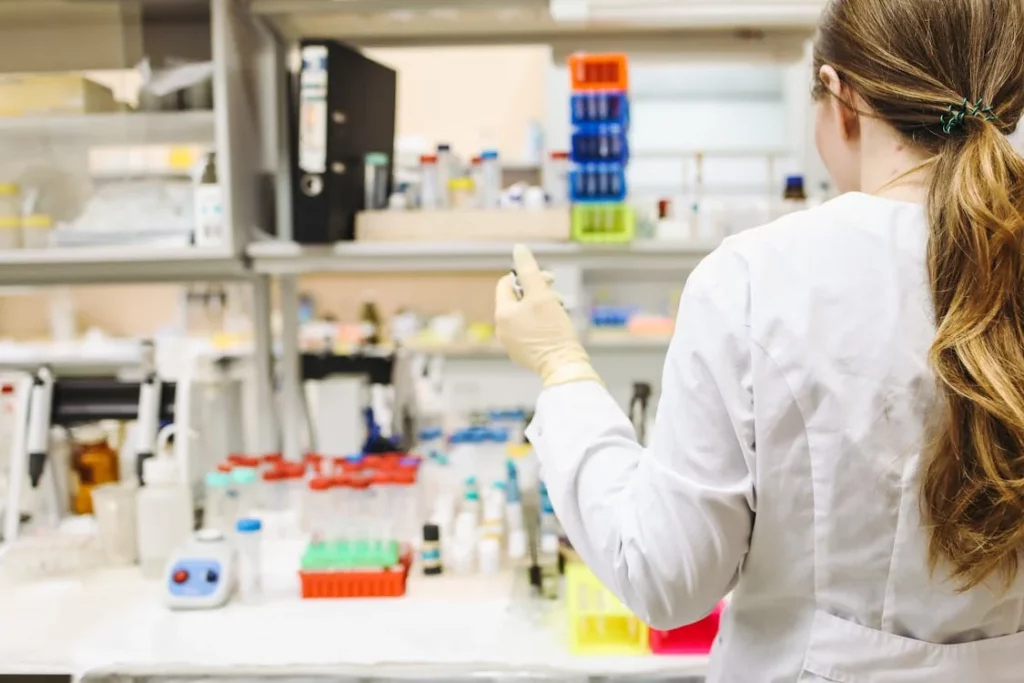
يمكن أن تختلف تكلفة تصنيع المكياج بشكل كبير بناءً على عوامل مثل نوع المنتج, المكونات المستخدمة, وحجم الإنتاج. الآن سنقوم بتحليل ثلاثة أنواع من مستحضرات التجميل: مؤسسة, ظلال العيون, وأحمر الشفاه. يعد فهم هذه التكاليف أمرًا بالغ الأهمية لأي شخص يتطلع إلى دخول صناعة مستحضرات التجميل.
مؤسسة
أساس التصنيع ينطوي على تكاليف كبيرة, من المواد الخام إلى الإنتاج. تستخدم كريمات الأساس عالية الجودة عادةً مكونات مثل السيليكون, أصباغ, والزيوت المختلفة. يمكن أن تتراوح تكاليف هذه المواد الخام من $1 ل $3 لكل وحدة. بالإضافة إلى ذلك, التعبئة والتغليف, بما في ذلك الزجاجات والمضخات, يمكن إضافة آخر $1 ل $2. مع العمالة, النفقات العامة للتصنيع, ومراقبة الجودة, قد تتراوح التكلفة الإجمالية لإنتاج وحدة واحدة من الأساس من $4 ل $7.
ظلال العيون
تعتمد تكاليف تصنيع ظلال العيون على مدى تعقيد التركيبة والتعبئة. قد تكون الصيغ الأساسية ذات الأصباغ الشائعة موجودة $0.50 ل $1 لكل وحدة في المواد الخام. يمكن للصيغ الأكثر تعقيدًا ذات الظلال المتعددة والأصباغ المتطورة أن ترفع التكلفة $1.50 ل $2. التعبئة والتغليف, خاصة بالنسبة للوحات, يضيف آخر $1 ل $3. إجمالي, تتراوح تكلفة إنتاج وحدة ظلال العيون عادة من $2 ل $5.
أحمر الشفاه
يعد أحمر الشفاه عنصرًا أساسيًا آخر في صناعة الماكياج مع اعتبارات التكلفة الخاصة به. المكونات الأساسية, بما في ذلك الزيوت, الشموع, والأصباغ, تكلفة عموما حولها $0.50 ل $1 لكل وحدة. يمكن للأصباغ المتخصصة أو فوائد العناية بالبشرة المضافة أن تزيد من تكاليف المواد الخام $1.50. العبوة, غالبًا ما تكون أكثر تفصيلاً مع الحالات المعدنية أو المخصصة, يمكن أن تضيف $1 ل $3. هكذا, تتراوح تكلفة الإنتاج الإجمالية لأحمر الشفاه الواحد من $2 ل $5.
كيفية تصنيع المكياج? المكونات جاهزة
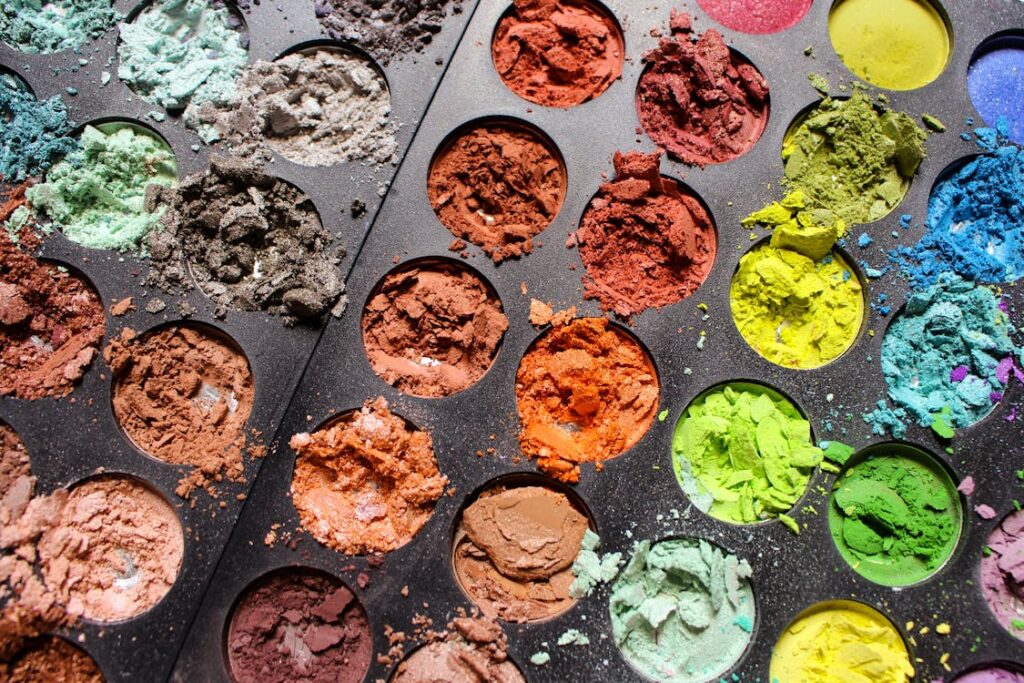
لتصنيع الماكياج, الخطوة الأولى هي تحضير المكونات الضرورية. ويمكن تصنيفها على نطاق واسع إلى المكونات الطبيعية والاصطناعية.
المكونات الطبيعية
المكونات الطبيعية تشمل المستخلصات النباتية, الزيوت الأساسية, والمعادن. يتم اختيارها لخصائصها الصديقة للبشرة واستدامتها. المكونات الطبيعية الشائعة في المكياج هي زبدة الشيا, زيت الجوجوبا, والميكا.
المكونات الاصطناعية
المكونات الاصطناعية, مثل السيليكون, ملونات صناعية, والمواد الحافظة, توفر قدرًا أكبر من الاستقرار والتنوع في التركيبات. فهي ضرورية لتحقيق مواد محددة, ارتداء طويل الأمد, والألوان النابضة بالحياة في منتجات الماكياج.
كيفية تصنيع منتجات المكياج?
يتضمن تصنيع منتجات المكياج سلسلة من الخطوات المعقدة, كل الضروريات لضمان سلامة المنتج النهائي, فعال, وجذابة. دعونا نستكشف العملية التفصيلية من الصياغة إلى الإنتاج.
عملية الصياغة
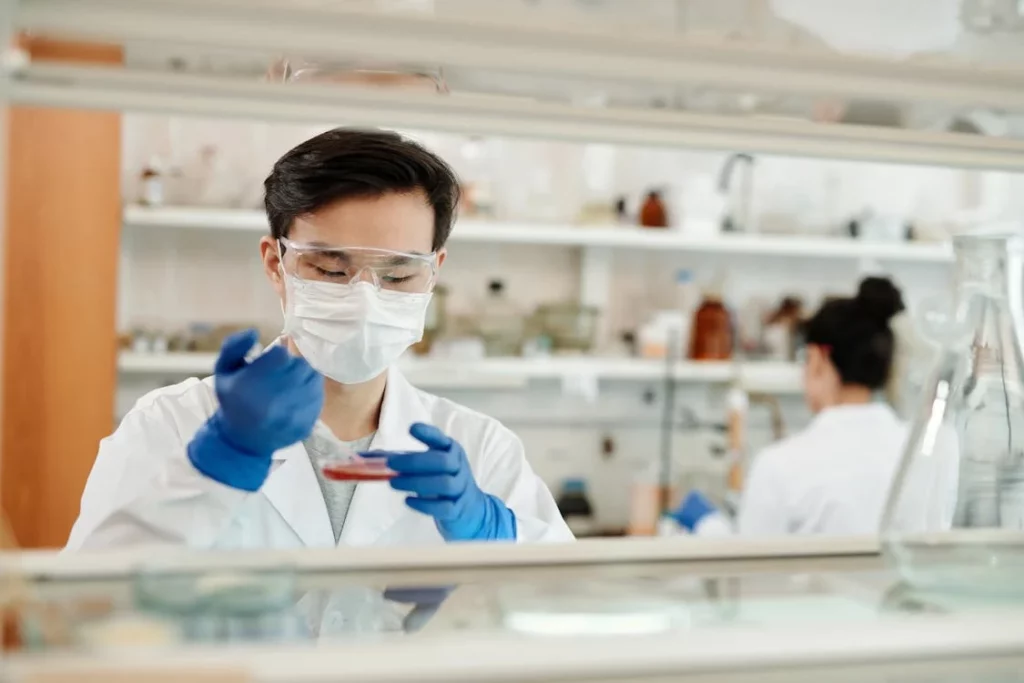
إن صياغة منتجات الماكياج هي الخطوة الأولى الحاسمة في التصنيع. يتضمن ذلك مزيجًا من الإبداع والدقة العلمية لتطوير المنتجات التي تلبي احتياجات المستهلكين والمعايير التنظيمية.
البحث والتطوير
البحث والتطوير (ر&د) هو المكان الذي تولد فيه منتجات الماكياج الجديدة. يعمل الكيميائيون ومطورو المنتجات معًا لإنشاء صيغ مبتكرة تحقق النتائج المرجوة. على سبيل المثال, يتضمن تطوير كريم أساس طويل الأمد تجربة مكونات مختلفة مثل السيليكون لتطبيق سلس والأصباغ للون. ر&يقوم فريق D بإجراء العديد من الاختبارات لتحقيق التوازن الصحيح في التغطية, نَسِيج, والمتانة. العلامات التجارية مثل فنتي بيوتي و سيلوران أحدثت ثورة في الصناعة من خلال R&د, مما أدى إلى مجموعة الأساس مع 50 ظلال متنوعة.
اختبار السلامة
يعد اختبار السلامة جزءًا غير قابل للتفاوض من عملية الصياغة. يخضع كل منتج جديد لاختبارات صارمة للتأكد من أنه آمن للاستخدام الاستهلاكي. تشمل الاختبارات اختبار الثبات لضمان بقاء المنتج فعالاً مع مرور الوقت, فحص مسببات الحساسية لمنع ردود الفعل السلبية, والاختبارات الميكروبية للتحقق من التلوث. على سبيل المثال, يتم تطوير واختبار تركيبات مضادة للحساسية لتقليل مخاطر الحساسية, ضمان أن المنتجات آمنة لأنواع البشرة الحساسة.
عملية الإنتاج
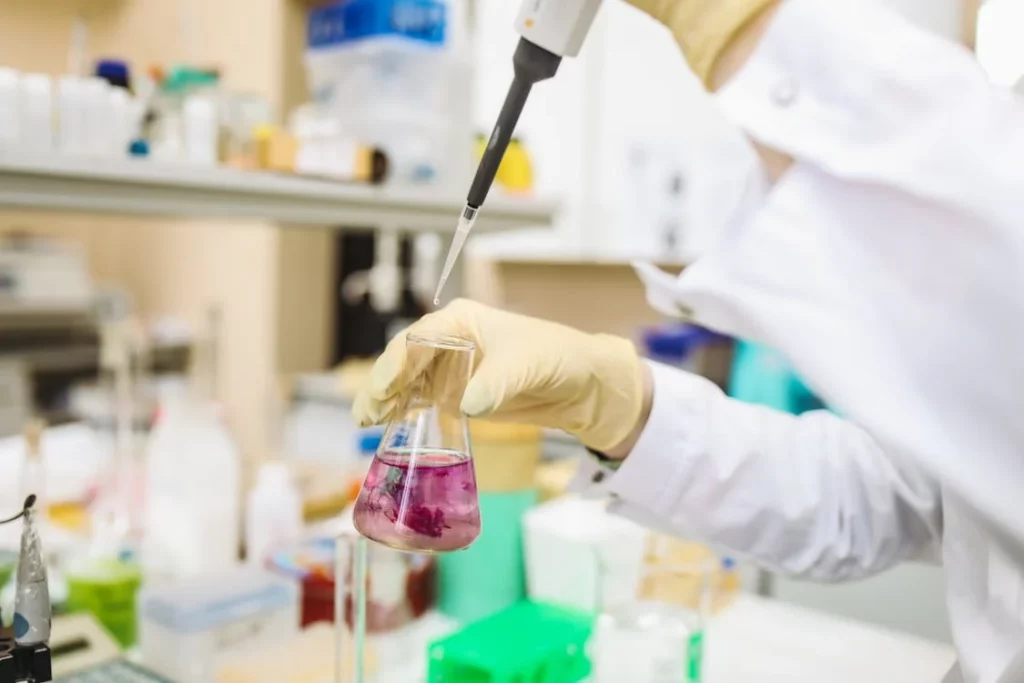
بمجرد إتقان الصيغة واعتبارها آمنة, تبدأ عملية الإنتاج. تتضمن هذه المرحلة تحويل المواد الخام إلى منتجات نهائية جاهزة للسوق.
مزيج ومزج
يعد الخلط والمزج من الخطوات الحاسمة حيث يتم دمج المكونات الخام لتكوين خليط موحد. معدات عالية الدقة تضمن أن الأصباغ, زيوت, ويتم توزيع المكونات الأخرى بالتساوي. على سبيل المثال, في إنتاج ظلال العيون, يتم مزج الأصباغ مع المجلدات والحشو لتحقيق نسيج ولون ثابتين.
التدفئة والتبريد
تتطلب بعض المكونات التسخين حتى تمتزج بشكل صحيح, تليها التبريد لتحقيق الاستقرار في الخليط. على سبيل المثال, في صناعة أحمر الشفاه, يتم تسخين الشموع والزيوت لتكوين مزيج سائل. يتم بعد ذلك تبريد هذا المزيج وترسيخه ليشكل المنتج النهائي, مما يضمن ملمسًا ناعمًا ومتناسقًا.
تعبئة وتغليف
الخطوة التالية هي تعبئة المنتج في عبوته النهائية. يجب أن تتم هذه العملية بدقة للتأكد من أن كل وحدة تحتوي على الكمية الصحيحة من المنتج. الآلات الآلية تملأ الحاويات, مثل زجاجات كريم الأساس أو أنابيب ملمع الشفاه, ضمان النظافة والاتساق. على سبيل المثال, تستخدم آلات التعبئة عالية السرعة للماسكارا, ضمان ملء كل أنبوب بالحجم الدقيق المطلوب.
رقابة جودة
تضمن مراقبة الجودة أن كل دفعة من المنتج تلبي المعايير الصارمة. يتضمن ذلك اختبار عينات عشوائية للتأكد من اتساقها, دقة الألوان, والجودة الشاملة. على سبيل المثال, إذا كانت مجموعة كريم الأساس تختلف في الظل أو الملمس, يتم تعديله أو التخلص منه للحفاظ على سلامة المنتج.
الابتكارات في صناعة المكياج
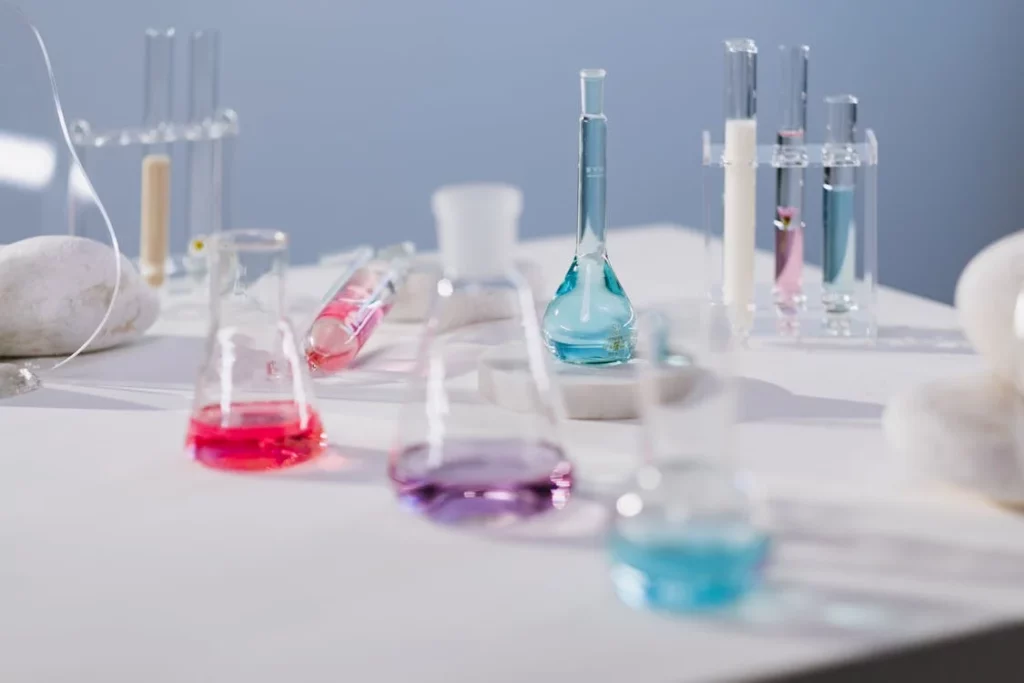
صناعة المكياج تتطور باستمرار مع الابتكارات. يعد التغليف المستدام أحد هذه التطورات, مع علامات تجارية مثل Lush وSiloran باستخدام مواد قابلة للتحلل. ابتكار آخر هو ظهور الجمال النظيف, التركيز على غير سامة, المكونات من مصادر أخلاقية. تقنيات التطبيقات المتقدمة, مثل مكياج البخاخة ومستحضرات التجميل المطبوعة ثلاثية الأبعاد, تظهر أيضًا, تقدم للمستهلكين طرقًا جديدة لتعزيز روتين جمالهم. قدمت بعض العلامات التجارية لمستحضرات التجميل مثل Milk Makeup تركيبات لاصقة صلبة, القضاء على الحاجة إلى نفايات التعبئة والتغليف وتبسيط التطبيق.
هل يمكنك تعقيم الجرار وإعادة استخدامها في صناعة مستحضرات التجميل؟?
نعم, يمكنك تعقيم البرطمانات وإعادة استخدامها في صناعة مستحضرات التجميل, لكنه يتطلب بروتوكولات صارمة لضمان السلامة والنظافة. تتضمن العملية تنظيفًا شاملاً, تعقيم, والتفتيش على كل جرة. وفقا لإدارة الغذاء والدواء, يجب تعقيم الحاويات المعاد استخدامها باستخدام طرق مثل التعقيم أو الأشعة فوق البنفسجية للقضاء على أي تلوث ميكروبي. قامت شركات مثل Lush بتنفيذ برامج إعادة استخدام الجرار, حيث يقوم العملاء بإرجاع الحاويات الفارغة التي يتم بعد ذلك تنظيفها وتعقيمها لإعادة استخدامها. لا تقلل هذه الممارسة من الهدر فحسب، بل تدعم أيضًا جهود الاستدامة في صناعة التجميل, شريطة أن يتم اتباع جميع معايير الصرف الصحي بدقة.
أين يتم تصنيع معظم مستحضرات التجميل؟?
يتم تصنيع معظم مستحضرات التجميل في بلدان معروفة بصناعاتها التجميلية المتقدمة ومعاييرها التنظيمية الصارمة. وتشمل المحاور الرائدة:
- الصين: يحدث جزء كبير من تصنيع المكياج في الصين نظرًا لقدراتها الإنتاجية واسعة النطاق وفعاليتها من حيث التكلفة, تخدم كل من الأسواق المحلية والدولية. على سبيل المثال, توفر شركة تصنيع مستحضرات التجميل Siloran منتجات المكياج بالجملة و علامة خاصة الخدمات بأسعار معقولة.
- الولايات المتحدة: موطن للعديد من ماركات التجميل العالمية, الولايات المتحدة. لديها قطاع قوي لتصنيع مستحضرات التجميل مع معايير عالية لسلامة المنتجات والابتكار.
- فرنسا: مشهور بمستحضرات التجميل الفاخرة, فرنسا لاعب رئيسي في إنتاج الماكياج, خاصة في مناطق مثل باريس وجراس, معروفون بخبرتهم في مجال العناية بالبشرة والعطور.
- إيطاليا: معروف بمستحضرات التجميل الملونة عالية الجودة, يتركز التصنيع في إيطاليا في مدن مثل ميلانو, إنتاج منتجات متميزة للعلامات التجارية العالمية.
- كوريا الجنوبية: تشتهر بابتكاراتها التجميلية المتطورة, كوريا الجنوبية رائدة في تطوير اتجاهات العناية بالبشرة والمكياج, تصدير المنتجات في جميع أنحاء العالم.
لقد أثبتت هذه الدول نفسها كقادة في صناعة مستحضرات التجميل, الجمع بين الخبرة التقليدية والتقدم التكنولوجي الحديث لإنتاج مجموعة واسعة من منتجات التجميل.
كيفية العثور على الشركة المصنعة للماكياج?
العثور على شركة تصنيع مكياج موثوقة يتضمن عدة خطوات لضمان شراكتك مع شركة تلبي معايير الجودة واحتياجات العمل الخاصة بك. وإليك كيفية القيام بذلك:
- حدد متطلباتك: تحديد نوع المنتجات التي تريد تصنيعها, الكمية, ومتطلبات محددة مثل الشهادات (على سبيل المثال, عضوي, خالية من القسوة).
- بحث: ابدأ بالبحث عن الشركات المصنعة عبر الإنترنت. مواقع مثل علي بابا, توماس نت, ويمكن لمنتديات الصناعة تقديم قائمة بالمصنعين المحتملين. بجانب, يمكنك العثور على مواقع مستحضرات التجميل مثل https://www.siloran.com/ لإيجاد حلول وقفة واحدة. ويمكنك البحث عن الشركات ذات التقييمات الجيدة, محافظ قوية, وسجل حافل في تصنيع مستحضرات التجميل.
- التحقق من بيانات الاعتماد: التأكد من حصول الشركات المصنعة على الشهادات اللازمة, مثل برنامج الرصد العالمي (ممارسات التصنيع الجيدة), شهادات الأيزو, والامتثال للوائح إدارة الغذاء والدواء. تشير أوراق الاعتماد هذه إلى الالتزام بمعايير الجودة العالية.
- طلب عينات: اطلب عينات من المنتجات لتقييم جودة تركيباتها, التعبئة والتغليف, والانتهاء الشامل. سيساعدك اختبار العينات على قياس ما إذا كانت الشركة المصنعة قادرة على تلبية توقعاتك.
- قم بزيارة المنشأة: إذا كان ذلك ممكنا, قم بزيارة منشأة التصنيع لرؤية عملياتها بشكل مباشر. هذا يسمح لك بفحص معداتهم, عمليات الانتاج, وتدابير مراقبة الجودة.
- تقييم الاتصالات: التواصل الفعال أمر بالغ الأهمية. تأكد من استجابة الشركة المصنعة, يفهم رؤيتك, ويمكن أن يوفر تحديثات منتظمة طوال عملية الإنتاج.
- التحقق من المراجع: اطلب مراجع من العملاء الآخرين الذين عملوا معهم. اتصل بهذه المراجع للحصول على فكرة عن تجربتهم ورضاهم عن الشركة المصنعة.
- التفاوض على الشروط: مناقشة والتفاوض بشأن شروط مثل التسعير, الحد الأدنى لكميات الطلب, المهل الزمنية, وشروط الدفع. تأكد من أن جميع الاتفاقيات موضحة بوضوح في العقد.
- ابدأ بأمر المحاكمة: قبل الالتزام بالإنتاج على نطاق واسع, تقديم طلب تجريبي أصغر لاختبار قدرات الشركة المصنعة وموثوقيتها.
خاتمة
إن فهم كيفية تصنيع المكياج يقدم لمحة رائعة عن مزيج العلوم, الفنية, والدقة التي تدخل في صناعة منتجات التجميل. من البدايات التاريخية إلى ابتكارات العصر الحديث, تتضمن العملية بحثًا دقيقًا, اختبارات السلامة الصارمة, وتقنيات الإنتاج المتقدمة. سواء كنت مهتمًا بالتكاليف, استخدام المكونات الطبيعية مقابل الاصطناعية, أو كيفية العثور على الشركة المصنعة المناسبة, إن معرفة خصوصيات وعموميات تصنيع الماكياج يمكن أن تساعدك على تقدير التعقيد الكامن وراء مستحضرات التجميل المفضلة لديك. من خلال استيعاب هذه التفاصيل, يمكنك اتخاذ خيارات أكثر استنارة كمستهلك أو رجل أعمال في صناعة التجميل.


